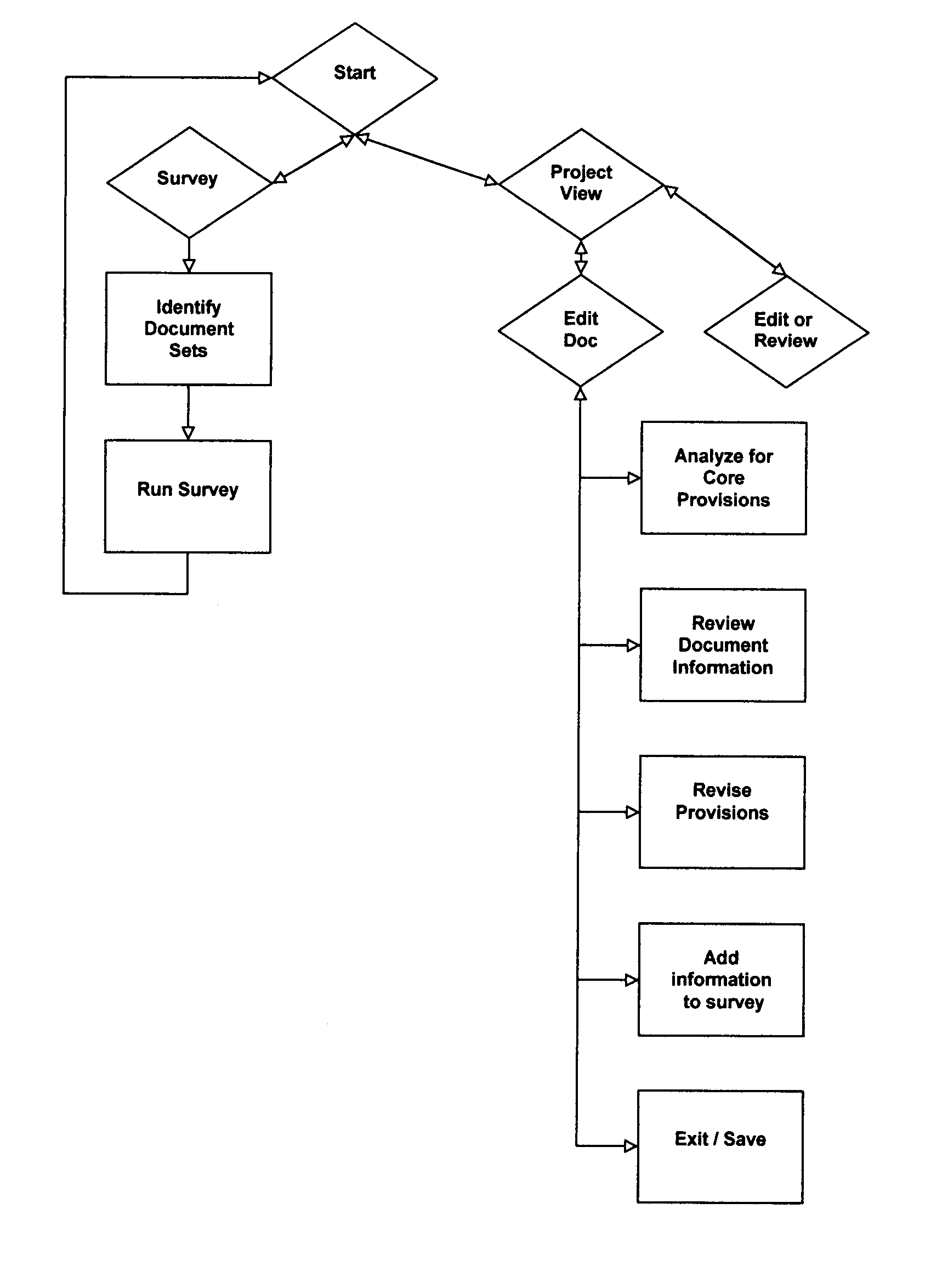Computer editing system for common textual patterns in legal documents
a technology of legal documents and textual patterns, applied in the field of legal document computer systems, can solve the problems of inconvenient use, complex situations, and inability to use a separate contract provision database program to assemble an initial set of documents,
- Summary
- Abstract
- Description
- Claims
- Application Information
AI Technical Summary
Problems solved by technology
Method used
Image
Examples
Embodiment Construction
A. Brief Introduction to Functionality.
[0036]In order to more clearly describe in detail the various components of the present invention, it is useful to first present a brief initial summary of the functionality of the invention.
[0037]In contrast to the prior art, the present invention disclosed herein does not focus on the initial assembly of documents. The present invention involves the analysis and revision of existing legal documents. Typically the documents being reviewed and revised by a law firm are received from an opposing party's law firm in the course of a deal. In other words, the documents are unfamiliar to the law firm preparing revisions. The present invention disclosed herein (the “System”) thus assists the law firm to quickly and accurately revise, or “mark up,” the documents that were received.
[0038]More specifically, the present invention provides three broad types of functionality:
[0039]1. FUNCTION #1: The analysis of large numbers of sample legal documents to s...
PUM
 Login to View More
Login to View More Abstract
Description
Claims
Application Information
 Login to View More
Login to View More - R&D
- Intellectual Property
- Life Sciences
- Materials
- Tech Scout
- Unparalleled Data Quality
- Higher Quality Content
- 60% Fewer Hallucinations
Browse by: Latest US Patents, China's latest patents, Technical Efficacy Thesaurus, Application Domain, Technology Topic, Popular Technical Reports.
© 2025 PatSnap. All rights reserved.Legal|Privacy policy|Modern Slavery Act Transparency Statement|Sitemap|About US| Contact US: help@patsnap.com



